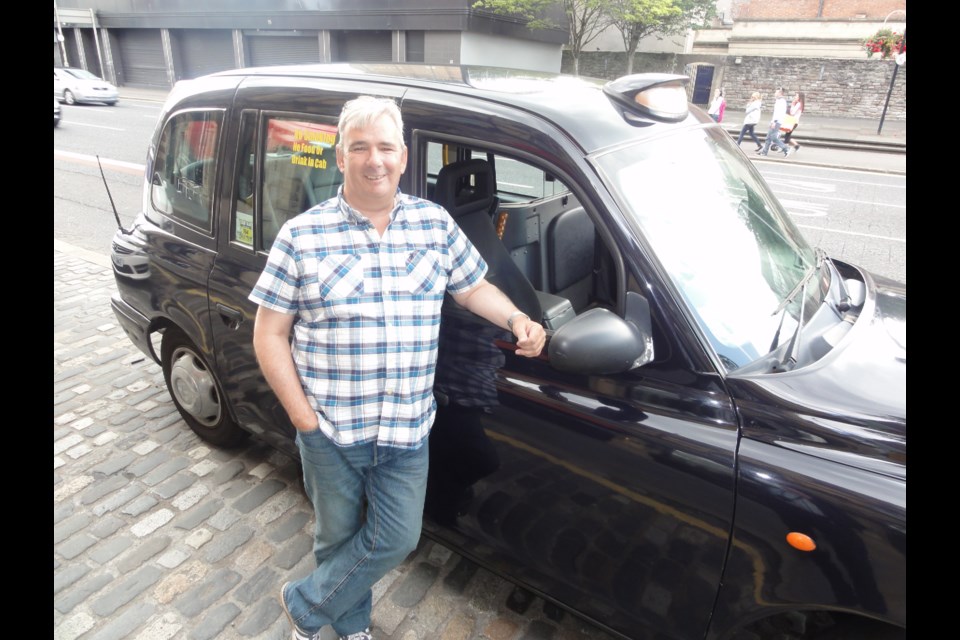Surprises abound in Belfast.
Such as the black taxicab driven by Billy Scott. Or, more correctly, Billy himself.
In many cities around the world, the taxi driver knows all, but doesn’t come close to telling passengers the half of it. He or she just wants to get you from point A to point B. In Northern Ireland’s capital, it’s a different story after Billy picks you up at the Stena Line ferry terminal. He’s one-part transporter, one-part historian.
He explains that Belfast is originally Beal Feirste — mouth of the sandbanks, where the River Lagan met the Farset. Look over there, Billy says, that’s Cave Hill. It may have inspired Jonathan Swift’s Gulliver. “A sleeping giant, see?”
Billy drives into the most notorious neighbourhoods in West Belfast, the Loyalist Shankill Road and the Republican Falls Road. They were the epicentre of the violent, sectarian Troubles for 40 years, until the American-brokered Good Friday peace accord in 1998 turned things around. The murals that dominate the sides of housing estates and apartment blocks are expressions of allegiance and pride, some even memorials to militants. They remain colourful and poignant reminders of the sorrow and loss on both sides. Belfast can’t escape its past and it doesn’t hide it either. Later, Billy stops at the Peace Wall, the division between Shankill and Falls. Hip hop graffiti is splashed across, a hashtag implores #DryYourEyes. A closer look reveals well-wishing messages in black marker. Billy pulls one from his pocket and offers it to visitors to leave their own.
Back in the cab, Billy guides the cab across the Lagan, to the Titanic Quarter, past the massive yellow arch of H&W, the Harland and Wolff shipyards. Titanic Belfast on Queen’s Island is a work of art itself, inside and out, telling the story of the rise and fall of the industrial city and the grand ship that was said to be unsinkable, from the district in which it was made. After enjoying the eight-storey building’s interactive exhibit, you can take a solemn walk along the massive, empty yard where Titanic was built. Billy wryly proclaims about the Titanic’s 1912 sailing: “She was fine when she left.” Next door is the film studio for Game of Thrones.
There’s the Odyssey Arena hockey rink, home of the professional Belfast Giants. Back across the Lagan to central Belfast, with a moment beside the Beacon of Hope sculpture, a 2006 work of the form of a woman in steel hoops. “There she be, the thing with the ring,” says Billy.
Next stop, the 1869-built, French/Gothic Albert Memorial Clock in Queen’s Square. You needn’t visit Pisa to see a structure askew, Billy remarks.
Winding our way through the narrow streets of the Cathedral Quarter, we stop and walk through a gallery of murals that tell the story of Belfast and its famous faces, including George Best and Van Morrison. Hopping back in the cab, Billy spots Terri Hooley, the godfather of Belfast punk, walking the streets. Billy says hello, and mentions a Canadian journalist is in for a ride. “Come by for a pint at 5 [p.m.], to the John Hewitt,” says Hooley, who locals consider the “Unofficial Mayor of the Cathedral Quarter.” The proprietor of the Good Vibrations record shop managed the Undertones — whose “Teenage Kicks” became a hit in 1978 on Hooley’s Good Vibrations record label. That was the basis for the 2012 biopic about him.
Sure enough, Hooley was at the pub at 5, celebrating the opening of a friend’s nature portraits art show. Another testament to the maxim that in Ireland there are no strangers, only friends you haven’t met. The pub, Hooley explained, is owned by the Belfast Unemployed Resource Centre, part of a Northern Ireland peace accord economic development project. Cathedral Quarter is the incubator for Belfast’s new music scene, specifically the Oh Yeah music centre, inside a former whiskey warehouse, where bands jam, record and plan their gigs. The Harp, where Hooley promoted many a show, is no more. A plaque marks the spot. Hooley recommends taking a peek inside the Duke of York pub. That’s where contemporary favourite Snow Patrol got its first gig in 1998.
Hooley enjoys an impromptu interview with a local magazine photographer, and I explore the Commercial Court area of the Cathedral Quarter. Hadskis, named for the operator of a late 18th century iron foundry, offers a menu of locally sourced delicacies and non-traditional meat, lamb and seafood dishes. Then, before retiring to the Malmaison, a boutique hotel in an old seed warehouse, I end the day at the Duke of York, which offers a dilemma. The narrow street is framed by blooming hanging baskets and red benches alongside the walls. A relaxing place to sip a Guinness on a summer’s eve. There is no band on this night, but the interior boasts a shrine to all things Guinness through the ages: old advertising with the toucan mascot, vintage mugs, even Gaelic football programs from the 1960s and 1970s.
Getting there:
Air Canada Rouge launches seasonal direct flights from Vancouver to Dublin June 10, departing Wednesdays, Fridays and Sundays. WestJet resumes its daily seasonal flights to Dublin May 1, via St. John’s. The bus ride to Belfast is two hours. The train, from Connolly Station in Central Dublin, takes two-and-a-half-hours to Belfast Central. Visit-Belfast.com and DiscoverIreland.ie.



